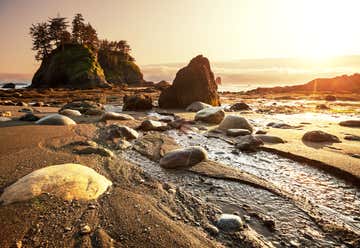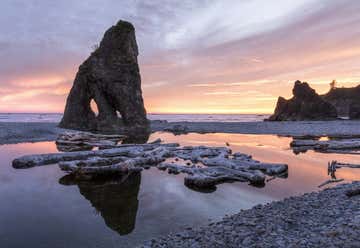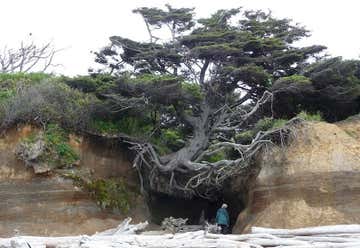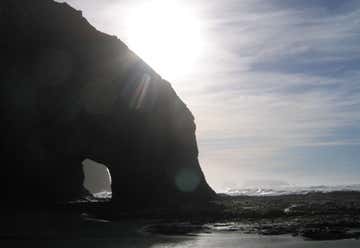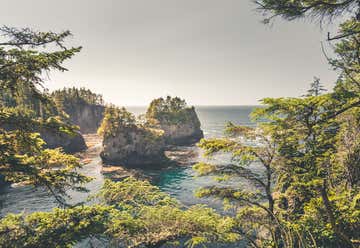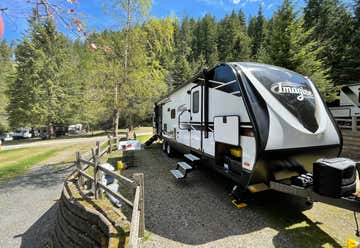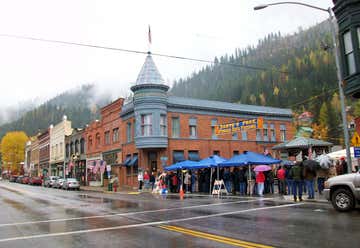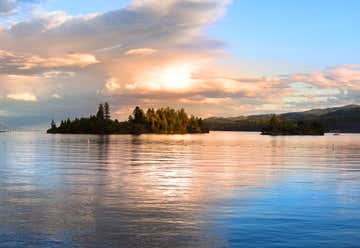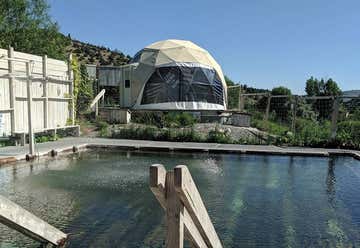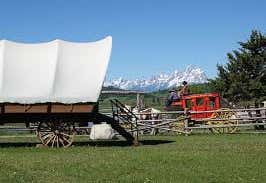When planning a trip, it can be hard to choose between a relaxing beach vacation, a serene mountain escape, or an adventure through the forest. Luckily, Olympic National Park, set in the beautiful Pacific Northwest, contains the best of everything: misty coastline, lush temperate rainforests, quiet lakes, and majestic mountains. Seriously, there's something for everyone here! Plus, it's right by Seattle, making it a great day or weekend trip, or you can make the Emerald City your home base for exploring the Olympic Peninsula.
Liberty Lake, Washington, United States
2104 East 1st Street, Port Angeles, Washington, United States
Some tips for visiting Olympic National Park: -The Pacific Northwest is known for its mild, often-rainy, and grey weather. Olympic's Hoh Rainforest can get up to 12 feet of rain a year. The park usually sees a dry spell between July and September, so that's always a good time to visit to avoid getting too wet, but definitely come prepared for some precipitation, i.e. raincoats, boots, etc. -The park is 1,441 square miles, and while a lot of it is wilderness, there are tons of more developed areas as well. The park is divided into two sections: one that covers the Olympic Mountains, and another on the coast. -Only the Kalaloch Campground can be reserved in advance during the summer, the others are first come, first serve. However, with 12 year-round campgrounds and 4 additional seasonal campgrounds, there should be something available. -If you choose to visit in the winter, the rainforests are your best bets for hiking, as they tend to be clear of snow. There are winter activity options available in the Olympic Mountain portion of the park, too, if that's more your speed.
The Hoh Rain Forest is all that remains of a massive forest that once stretched from California to Alaska. It still receives about 140 to 170 inches of water a year, so bring along a rain jacket just in case! There's also a campground here which you should take full advantage of, because honestly, nothing sounds more relaxing than camping out in one of the country's most verdant forests. It's also home to the stunningly blue Hoh River, which is fed by glacial melt and contains pure water and ground up glacial rock, giving it a distinctive opaque blue that contrasts perfectly with the green forest. It might seem weird to imagine a rainforest so close to a glacier, but Hoh is a temperate rainforest, not a tropical one. It's also where you'll find the Hall of Mosses Trail.
The Hall of Mosses Trail is one of a few trails that traverse the park's Hoh Rainforest, and at only .8 miles, it's pretty easy. But, just because it's short doesn't mean it isn't impressive! Hikers are entirely surrounded by lush greenery, moss covers the ground, the tree trunks, and even drips from the branches. It's easy to imagine that you're in another time or place (seriously, it's so overgrown that it feels like civilization is miles, or even centuries away).
The park is home to tons of wildlife, but if you're looking for hidden gems, you won't find any more magical (or fascinating) than the marine specimens found in the tidepools of Olympic National Park's beaches, like the beautiful Ruby Beach. On any given day, you might see green anemones, pink algae, seashells, and more starfish than you can count! Since tidepools can only be seen at low tide, check the tide times before you set off, and while you're looking at the tidepools, remember to be gentle with the creatures you find. The National Park Service also suggests bringing a bag to pick up any trash you might find laying on the beach. Oh, and remember to wear sturdy shoes that you won't mind getting a little wet!
Just off Highway 101 on the southwestern coast of the Olympic Peninsula lies Kalaloch and Ruby Beach. This area is incredibly important ecologically. It’s home to thousands of marine species. The 135-mile long coastline is even protected by not one, not two, but three national wildlife refuges and the Olympic Coast National Marine Sanctuary. Located along Olympic National Park’s 73 miles of coastline, lies Kalaloch, a very popular place for tourists, hikers and campers.
Kalaloch is Quinault for “a good place to land.” The campground is open all year long and has 175 campsites. Some of which are wheelchair-accessible. These campsites fill up fast, so best to book early to reserve a spot. And there’s also Kalaloch Lodge, which is located directly on the beach.
If you happen to visit Kalaloch Campground, there’s a pretty special tree located along the beach. From the campground, there’s a trail and steps that take you 40 feet down towards the beach. Along the beach you’ll come to this tree, which is still growing despite a very large gulch that developed underneath it.
The best tidepooling can be found at Kalaloch Beach Trail 4 and Mora's Hole-in-the-Wall. Since tidepools can only be seen at low tide, check the tide times before you set off, and while you're looking at the tidepools, remember to be gentle with the creatures you find. The National Park Service also suggests bringing a bag to pick up any trash you might find laying on the beach. Oh, and remember to wear sturdy shoes that you won't mind getting a little wet!
Welcome to the most Northwestern point in the continental United States! It's only a one-and-a-half mile round trip to reach this view, and you'll pass through misty forests of Sitka spruce until you reach the dramatic overlook. Keep your eyes peeled for Tatoosh Island in the distance, it was once a fishing camp for Native Americans, today it has a lighthouse on it, and is home to seals, and sea lions.
There are a few waterfalls in the park, but Sol Duc Falls is one of the coolest, it's visible year-round, but is especially magnificent in the spring, as the water thunders through the verdant landscape. From the parking lot at the trailhead, it's less than two miles total out and back, so it's pretty easily accessible, too.
A drive along Hurricane Ridge Road is an absolute must-do when visiting the park, plus there's a great visitor center and a few hiking trails, with stunning views. Access in winter is limited, although the mountains are super impressive covered in a blanket of pure white snow, and depends on several factors, so check conditions and open hours before you visit during the off season.
The best time to visit Olympic National Park: The three month dry spell between July and September brings in about 60% of the park's visitors, so come earlier in the summer to enjoy a slightly less crowded park, and the temperatures are usually mild, in the 70's. Winter means some snow and chilly temperatures, although some parts of the park are conducive to winter sports and others receive little snow. The spring is when the waterfalls are at their most impressive, but it also means quite a bit of rain, so if you visit early in the year be prepared to get a little wet.

